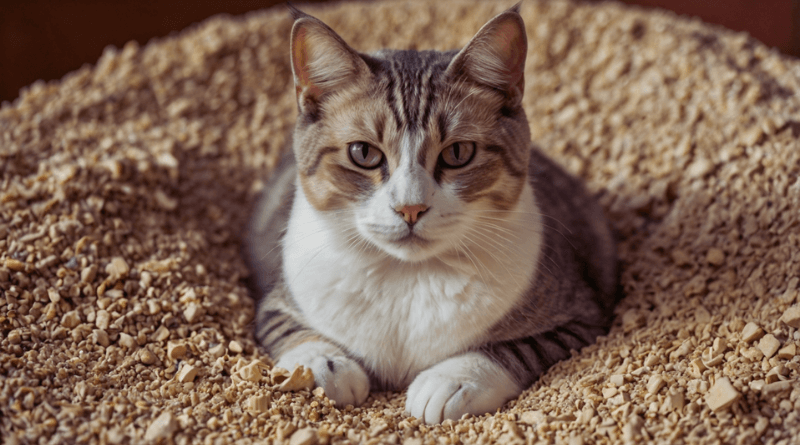Cats are beloved companions known for their grace and independent nature, yet cat litter avoidance is a perplexing challenge many owners encounter. Whether it’s due to discomfort, stress, or an unsuitable litter box setup, understanding the reasons behind this behavior can help you create a happier environment for your feline friend.
Medical Problems and Hidden Health Issues
Sometimes, a cat’s reluctance to use the litter box is not a case of stubbornness but a sign of underlying physical discomfort. Hidden health issues—such as bladder infections, painful stones, or joint problems—might make it uncomfortable for your cat to use the box. If you notice sudden changes in your cat’s bathroom habits, it is important to visit your vet for a thorough check-up. Experts at Cornell University College of Veterinary Medicine suggest that even minor changes in behavior could indicate hidden health problems that need attention.
Litter Box Setup and a Comfortable Space
Even in the absence of medical concerns, the environment surrounding your cat’s litter box plays a key role in its usage. Cats are creatures of habit and are highly sensitive to their surroundings. A litter box placed in a busy or noisy area may make your cat feel unsafe. Ensure your cat’s litter box is located in a calm, low-traffic area away from loud appliances or heavy household activity. Research from UC Davis School of Veterinary Medicine has shown that a clean, pleasant, and private setup increases the likelihood of regular use. Occasionally, a change in the type of litter that better suits your cat’s preferences can also lead to improvements.
The Role of Stress and Environmental Changes
A cat’s behavior can be strongly affected by changes in its environment. Relocations, the arrival of new family members, or significant alterations in daily routines can leave your feline feeling insecure. When a cat experiences stress, even a once-familiar litter box might seem uninviting. According to the American Veterinary Medical Association, establishing a stable and predictable environment is essential for reducing anxiety. Providing multiple litter box options in quiet corners of your home may ease the pressure on one specific location, giving your cat more choices and comfort during stressful times.
How to Address Cat Litter Avoidance
Here are some friendly, step-by-step tips to help guide your cat back to regular litter box use:
- Visit Your Vet: Begin by taking your cat to a vet. A thorough check-up can rule out hidden health issues such as bladder infections, painful stones, or joint problems before you address the behavior from an environmental standpoint.
- Check Your Litter Box Area: Evaluate whether the litter box is in a busy or noisy area and inspect if it’s maintained properly. A calm, clean, and well-situated litter box can make a significant difference in encouraging its use.
- Make Small, Gradual Changes: Avoid overwhelming your cat with too many modifications at once. Instead, make one change at a time—whether it’s the location of the litter box, the type of litter, or even the cleaning schedule. A step-by-step process helps your cat adjust without adding extra stress.
- Praise Your Cat: When your cat uses the litter box, offer gentle praise or a small treat. Positive reinforcement lets your pet know that the proper use of the litter box is appreciated and helps reinforce that behavior.
- Seek Expert Advice: If the problem persists despite your efforts, consider consulting a cat behavior expert. With personalized guidance, you can better understand your cat’s specific situation and adjust your approach to create a more comforting environment.
Bridging Knowledge with Practical Care
Understanding cat litter avoidance transforms frustration into an opportunity for improved pet care. By focusing on both physical comfort and emotional security, you can ensure that your pet lives a happier, healthier life. Experts at International Cat Care remind us that even minor improvements in environment and routine can have a significant impact on your cat’s well-being. Simple, thoughtful changes not only solve the immediate issues but also strengthen the trust between you and your cat.
A Final Word on Caring for Your Cat
Addressing litter box problems requires patience, insight, and a willingness to tailor solutions to your cat’s unique needs. Every cat is different, so it may take some time to pinpoint the exact cause of litter box avoidance. With regular monitoring and gentle adjustments—such as offering extra praise or modifying the litter box location—you can cultivate an environment in which your cat feels truly safe. Remember, small changes can lead to big improvements, providing you with a deeper understanding of your pet’s needs and reinforcing the loving bond you share.
Sources: Humane Society Veterinary Medical Association, Tufts University Cummings School of Veterinary Medicine, National Animal Supplement Council

